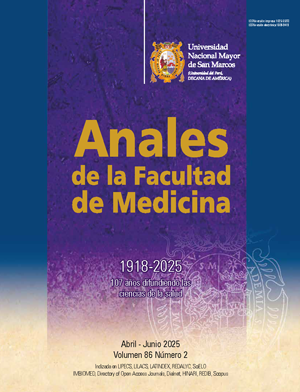Anemia in Peru: is there a need for universal supplementation and food fortification with iron?
DOI:
https://doi.org/10.15381/anales.v86i2.30580Keywords:
Anemia, Dietary Supplements, Iron, Public Health Surveillance, Children, PeruAbstract
For over 60 years the World Health Organization (WHO) has recommended iron supplementation for vulnerable populations in low- and middle-income countries due to the high prevalence of anemia. Despite these measures, childhood anemia remains a serious public health issue. Governments have implemented policies such as iron supplementation and food fortification, but the results have been limited. Advances in the understanding of iron physiology—particularly regarding regulatory hormones and the risks associated with excessive intake—have led to a rethinking of current approaches. In 2024, the WHO updated the hemoglobin thresholds for defining anemia, which has changed the global landscape. In Peru, this revision reduced the prevalence of anemia in children aged 6 to 35 months to 35,3%, meaning it is no longer considered a severe public health problem. This calls for a reassessment of the universal nature of current intervention strategies.
Published
Issue
Section
License
Copyright (c) 2025 Anales de la Facultad de Medicina

This work is licensed under a Creative Commons Attribution-NonCommercial-ShareAlike 4.0 International License.
Those authors who have publications with this magazine accept the following terms:
- Authors will retain their copyrights and guarantee the journal the right of first publication of their work, which will be simultaneously subject to Creative Commons Attribution License that allows third parties to share the work as long as its author and its first publication this magazine are indicated.
- Authors may adopt other non-exclusive licensing agreements for the distribution of the version of the published work (eg, deposit it in an institutional electronic file or publish it in a monographic volume) provided that the initial publication in this magazine is indicated.
- Authors are allowed and recommended to disseminate their work over the Internet (eg: in institutional telematic archives or on their website) before and during the submission process, which It can produce interesting exchanges and increase quotes from the published work. (See El efecto del acceso abierto ).



